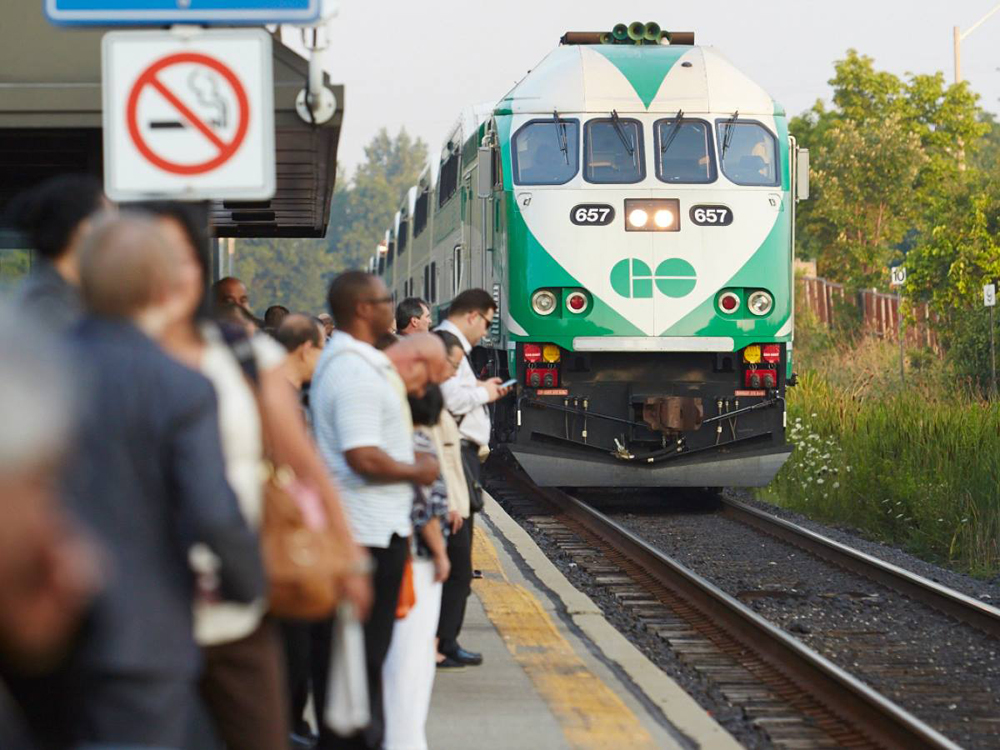
LONDON, Ontario — A two-year pilot program offering GO Transit commuter rail service between London and Toronto — hampered by its lengthy travel time — will not be renewed when the trial period ends in October, the London Free Press reports.
The single round trip, which debuted in October 2018, is currently scheduled for exactly four hours in each direction to cover the 114 miles between London to Toronto Union Station.
VIA Rail Canada trains, which use a more direct route, can take as little as 2 hours, 10 minutes, but — using July 5 fares as an example, according to a June 30 search — cost anywhere from C$41 to C$176 (for “Business Plus”) one-way compared to the C$30 for a one-way GO fare. Driving can take 2 to 3 hours depending on traffic.
Ridership has never been impressive, averaging 32 per trip a month after the service began [see “New GO Transit service to London …,” Trains News Wire, Dec. 6, 2021] and 65 per day in February 2022. At that time, Deputy Mayor Josh Morgan — now the city’s mayor — said he was not surprised by the ridership, saying the service needed to be faster and more frequent
Morgan told the Free Press last week that the city would continue to try to get better rail and transit service.
“Where I always saw a lot of potential in this was the fact that it connected people shorter distances away,” he said. “London is a hub and we do know people are looking to move in and out of our city. We need more frequent, faster rail service to and from the [Greater Toronto Area] … We’ve been advocating with the federal government lately for the improvement of VIA Rail service to London. For me, that has been the focus lately.”






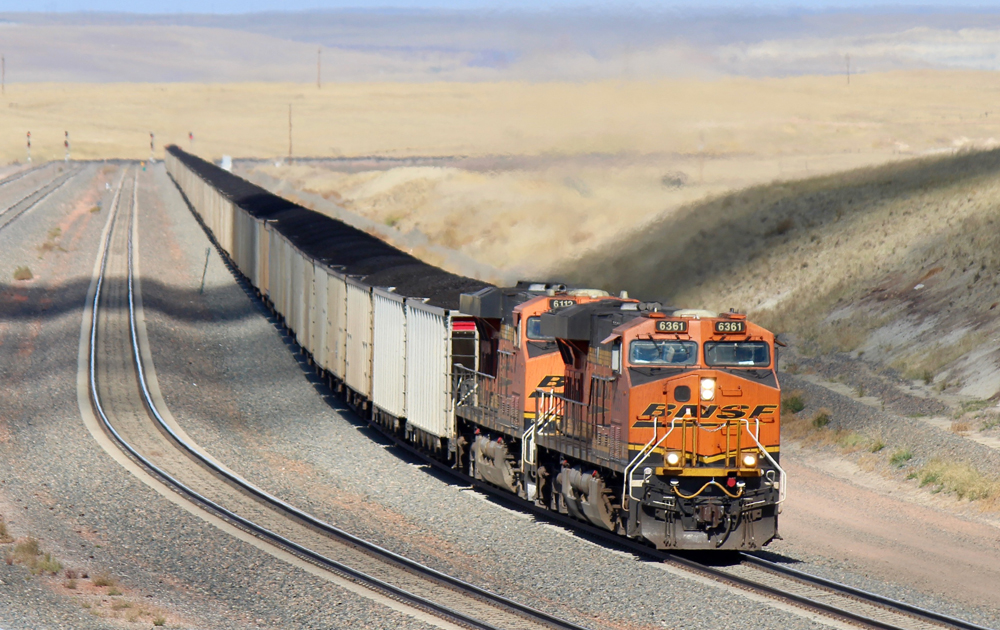
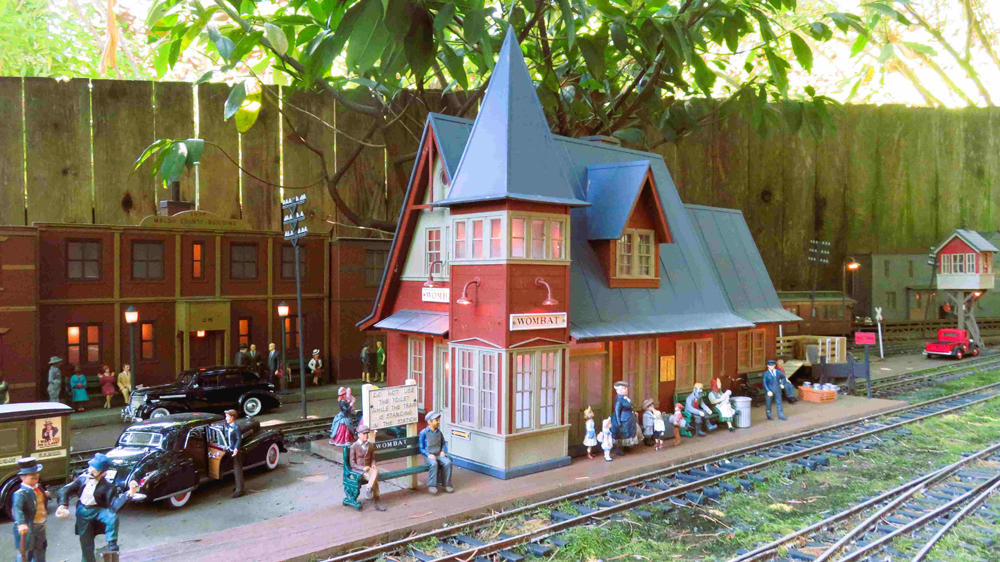
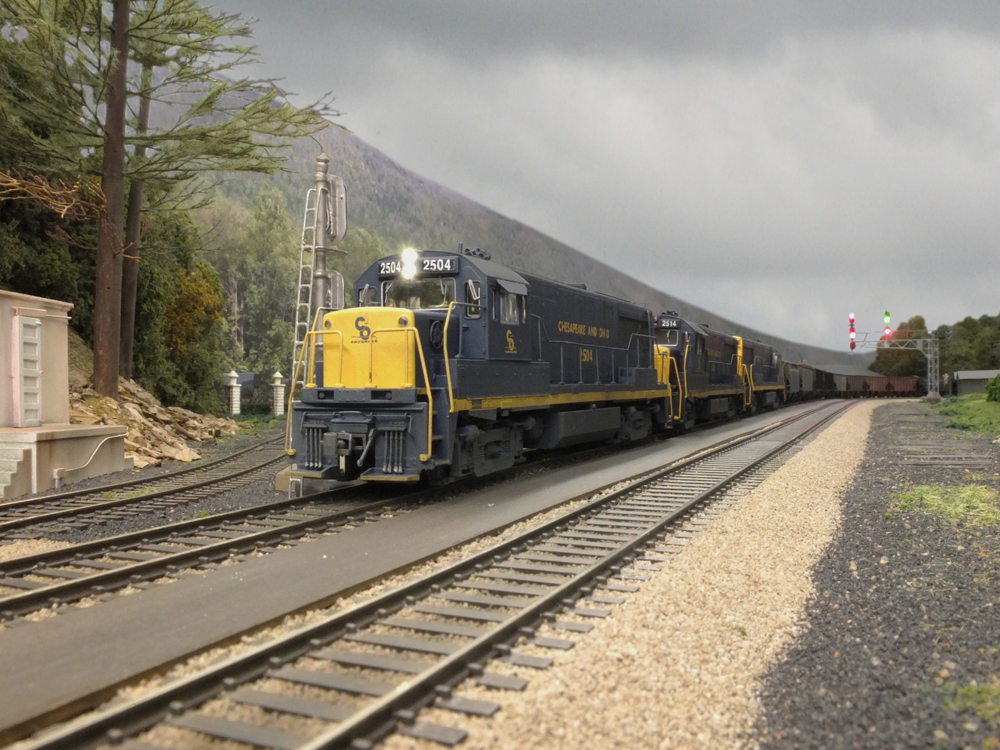
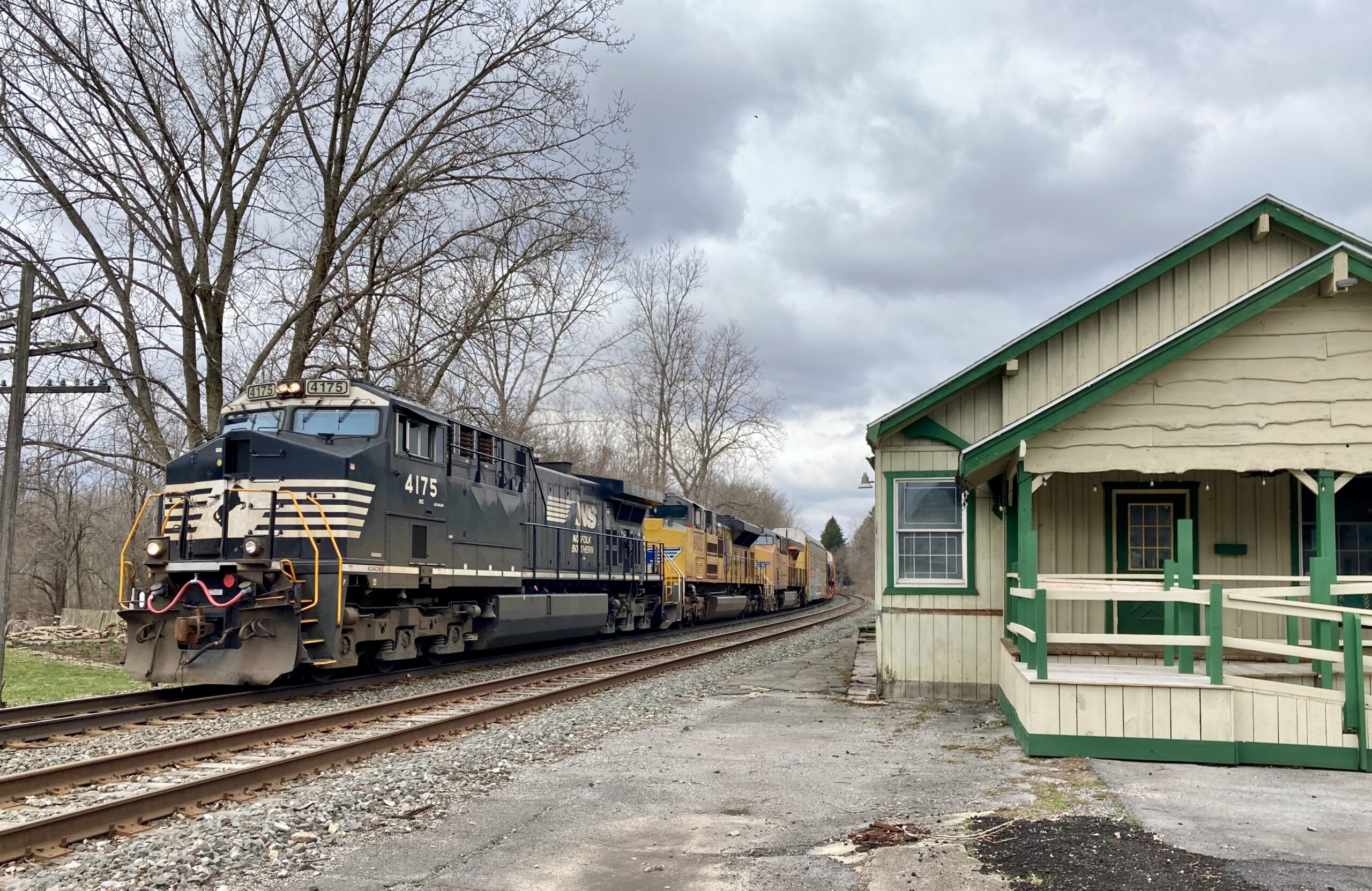




Regional 151 is 5.43 AM out of Phila, 6.06 AM Wilm and 7.40 AM in Wash.
Acela 2103 is 7.16 AM out of Phila, 7.40 AM Wilm and 8.59 AM in Wash.
Back in the 1971 RDG-CNJ 600-602 were
600 6.32 Phila, 6.55 Jenkintown, 8.19 Newark, 8.43 NY (PATH)
602 7.40 Phila, 8.00 Jenkintown, 9.21 Newark, 9.44 NY (PATH)
600 ran with 2 RDC’s, 602 with 3; each had a combine converted to a food car.
600-602 were discontinued under CR when no state agency would assume responsibility.
This subdivision is now a secondary main, not even sure it could be called a main line anymore.
To become any use as a passenger train line with 80 mph track speeds like the Dundas sub Via uses would require a multi million dollar expenditure.
Doubt we’ll ever see it.
4 hours each way which is a total of 8 hours spent just traveling before you actually get to work at the office which is very extreme. No energy left in you when you finally get to your job and office and no life or energy to spend time with the family when you get home. With thoseconditions, its no wonder that people would just rather work from home. Since when did commuting become a job in itself. No wonder that this wild scheme was a bust and doomed to failure from the start. Just curious to know how much this cost in funding when the money allocated for this fiasco could have been used where needed to maintain service on other lines where usage and patronage is high and necessary
Joseph C. Markfelder
The future is bright for the world-class, forward-thinking province of Ontario. Anyone with a positive way of thinking will wish the same future for experienced GO Transit and VIA Rail.
Dr. Güntürk Üstün
The announcement comes a day after we learned that VIA Rail trains 82 and 83 to and from Toronto will be returning sometime later this year.
Dr. Güntürk Üstün
A four-hour commuter train? That would mean for an 8.00 AM arrival in Toronto Union Station, you would board ar 4.00 AM. If the return left at 5.30 PM, arrival London Station would be 9.30 PM. Can you sleep in a GO Lozenge Car?
In 1958, CNR 14 left London 5.52 AM, Brantford 7.00 AM and Toronto 8.55 AM. It was a through express from Chicago via the Port Huron-Sarnia Tunnel.
Improving VIA Rail service seems the better option. Several American states — Maine, Virginia, North Carolina — do work with Amtrak relatively well, Ontario should partner with VIA.
As mentioned above, the related commuter rail service needed to be faster and more frequent and VIA Rail’s service to London needed to improve efficiently!
Dr. Güntürk Üstün
The London GO pilot project will run its last route on Friday Oct. 13, 2023, exactly about two years after it first launched during the COVID-19 pandemic.
Dr. Güntürk Üstün
GO Transit’s rolling stock uses push-pull equipment. Its passenger car fleet is composed entirely of Bombardier BiLevel Coaches built in Thunder Bay, Ontario. The coaches are primarily hauled by MPI MPXpress series locomotives. The current model, the 4000-horsepower MP40PH-3C, is more powerful than their predecessors, the EMD F59PH. They are capable of pulling or pushing trains of 12 coaches instead of 10. More than 60 of these locomotives have been ordered since their introduction in 2006, with a further 16 types of an even more powerful model, the 5400-horsepower MP54AC, which can pull a full 12 car train more efficiently. Opposite the locomotive, trains are bookended by cab cars, which are coaches with driver controls incorporated into them.
Dr. Güntürk Üstün
GO Transit is currently undergoing a major expansion project to improve train service. The project will electrify the Lakeshore East, Lakeshore West, Barrie, Kitchener and the Stouffville lines, and increase train frequency on various lines to 15 minutes or better on these corridors, with several new stations being built both within Toronto and throughout the GTHA. It will also bring all-day, two-way service to the inner portions of the Barrie, Kitchener and Stouffville lines. GO Transit will increase the number of train trips per week from 1,500 (as of 2015) to about 2,200 by 2020 and expand to 10,500 weekly trips upon completion. Most of the extra trips will be in off-peak hours and on weekends. The expanded services, new infrastructure and electrification is projected to roll out in phases between 2025 and 2030. The 10-year regional express rail plan will cost $13.5 billion and will require 150 kilometres (93 mi) of new track, including new bridges and tunnels.
Dr. Güntürk Üstün
Back in the day when VIA actually ran trains and before VIA became a sick joke, London was a hub. Traveling from Kitchener to Lapeer (Michigan), we changed at London. Simple, reliable. Kind of like a real railroad, like the railroad that serves the other London, the one in England.
If VIA did its job there would be no need for GO to serve London.
Ture Charles. This GO service was DOA..